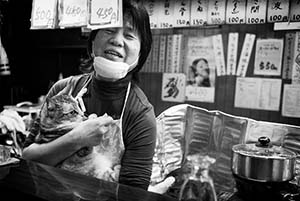Kanban
Traditional Japanese Management Practice c. 1900
The methodology now known as Kanban has a long history in Japan, greatly predating its rise to prominence through the work of Taiichi Ohno (1912-1990) at Toyota in the late nineteen forties.

Kanban originated as a culturally embedded working practice in Japanese shops, restaurants and other "street" businesses in which a methodical, staged card or ticket system was applied in order to track work through each business. The concept of a Kanban, or proclamatory sign board, was common among the gangs known as Tekiya, originally street pedlars who ran protection rackets and similar activities in shopping districts, as well as running legitimate businesses themselves. There is a theory that the Tekiya were able to use the kanban system to match the work going through each business against claimed takings, thereby clamping down on avoidance of payment by proprietors. Together with the Bakuto, who controlled gambling, the Tekiya were the forerunners of the modern Yakuza.
Relatively speaking, Kanban systems work by pulling work through a business in response to demand, rather than pushing it through by predicting demand in advance. Increased quality and efficiency are achieved through ensuring that nothing was overlooked while retaining the flexibility to respond to changing circumstances. In addition, this way of working strongly promotes team focus, since the cards provide a common focal point, ensures that sufficient work gets finished before new work is started, and also provides at-a-glance status updates to management functions. Thus, Kanban is every bit as much an agile working practice as more modern methods like Scrum and XP.
In the late forties, under the leadership of Taiichi Ohno, Toyota began looking at applying Kanban to its manufacturing and other processes, which proved to be a significant success. The success of Kanban at Toyota subsequently popularised the technique among larger businesses.
